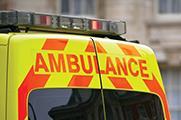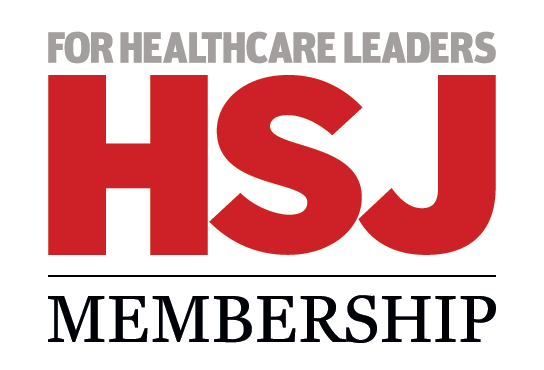St Helens and Knowsley Teaching Hospitals Trust is a pioneer in the shift from paper-based to electronic healthcare. Neil Darvill explains the benefits of a wholesale digitisation of patient records
Setting the NHS free from paper-based systems is essential for improving healthcare. At St Helens and Knowsley Hospitals that goal is in sight. A huge digitisation project has already allowed us to consign paper hospital medical records to the bin.
In terms of speed and efficiency it’s like reaching the open motorway after being stuck behind a tractor on the B roads. And we have even more ambitious plans in store.
Within months I hope that most of our patient services will be run entirely electronically. The main foundations are already in place, as clinicians have instant and easy electronic access to patient records. Our computerised bed management system is being upgraded and we will shortly complete the rollout of electronic order communications (OCS) and e-discharge.

Next, we will ensure that the notes clinicians take during each patient consultation go straight on to the computer – eliminating the last widely used paper-based process.
Paper shackles your potential – it can only ever be in one place. Files can take time to locate, access and move. Physical notes can be hard to care for, and can be illegible, incomplete or untraceable. The basic task of making sure the clinician has the correct file when it’s needed becomes a major logistical feat when it has to be done hundreds of thousands of times a year.
Going electronic significantly improves our ability to deliver the best possible patient care in a safe and timely manner. It required three years of change management, working closely with the 14,000 IT users that the Health Informatics Service looks after.
This shift was only possible because we had already done all the deeply unglamorous work of creating good-quality infrastructures (these reach beyond the trust throughout the local primary, community and mental health sectors). We also ensured that there were a sufficient number of computers, that these were fast enough, and that there was support to deal with any problems. This allowed us to create an environment where staff no longer worried about whether the IT would work – it was a given.
Major advance
The digitisation of medical histories combined with the fact that most of the transactional and diagnostic matters are computerised is producing a transformation. The benefits are speed, efficiency, accuracy, reduced administration and enhanced patient safety. These are rather abstract terms when the aim is to change lives – a couple of examples show the gains in more human terms.
Our old patient discharge form was five sheets of self-carbonating paper and the transfer of information could be imperfect. Now an e-form is completed as the patient is discharged. The system is linked to the patient record and to pharmacy. Take-home drugs are ordered from our formulary list, corroborated and sorted. Patients are handed a printout before they leave. By summer the rollout was completed and full details of any episode, diagnosis, treatment, drugs and follow-up emailed to local GPs.
The bed management system is also a major advance. If patients are transferred within the hospital, the system removes the possibility of urgent information being sent to an incorrect location. There is no delay in transferring information with the patient and notes and test results are instantly available to the clinicians taking over their care.
Previously, patient locations were identified at the end of each day. One gain, in some ways modest, makes a real difference to the experience of patients and families. When relatives arrive at the hospital after learning that their husband, wife or parent has been admitted, by typing in a name receptionists can immediately give directions to the right ward, reducing any stress or delay in reaching their loved one.
OCS, again, transforms and simplifies. When numerous tests are ordered, once rollout is complete, we will be able to track each order and be sure it is acted upon. There is no possibility of results being missed or delays in information being received by the clinicians.
Our achievements to date, especially the shift to electronic patient records, have put us in an enviable position – right at the forefront of NHS informatics. Just as important is that they pave the way for new developments that will mobilise the full potential of our IT to enable clinicians to improve patient outcomes.
The company behind our EPR, OCS, bed management and e-discharge systems is IMS MAXIMS. By combining our skills we can use the paper-lite healthcare environment to make rapid progress towards something even more profound.
Conceptual work is under way on an innovation that will combine the power of our clinical IT, our huge quantity of patient data and the wealth of knowledge held by our most senior clinicians. The vision is for a highly structured data capture system which not only records and provides all the relevant information for every encounter, but offers decision support at every point along the patient pathway.
‘What we are aiming for is a system that provides a default position, based on specific information about each patient. This in no way reduces the role of the clinician’
While our most senior doctors cannot be present all the time, their expertise can. So, for example, when a junior doctor enters a patient’s details they would see a list of questions to ask. The answers would trigger onward events by indicating an appropriate course of action.
If the doctor wished to prescribe something to which the patient is allergic, the system would flag it up. Or if a patient is having drugs for chest pains and new height and weight measurements show their BMI might be of concern, suggestions would be made on how to proceed.
What we are aiming for is a system that provides a default position, based on specific information about each patient. This in no way reduces the role of the clinician. It’s not a matter of right and wrong, it’s about saying “most patients who had this test had this one as well”, or “if A and B turn out to be the case, it might be beneficial to do more tests”. The decision would always remain with the clinician.
At present we have clinicians mapping out what they believe a new, empowering system could and should do. If all goes well IMS MAXIMS will turn their ideas into software. But the result would be a toolkit rather than a prescriptive off-the-shelf product. This is important because we want clinicians to determine exactly how any process works, and I want us to be able to evolve and change it ourselves, without having to go back to the supplier constantly or wait for generic updates which may not fulfil our specific needs.
While some specialist IT systems will always be needed, I hope the new project will be largely centralised around the electronic patient record, to maximise accessibility.
Better, safer care
I also believe that the interface should embrace more than just the mouse and keyboard. Desktops are fine for many uses, such as an outpatient clinic where the clinician is in a room and patients pass through. But it does not suit a ward round where it’s the patients who are static and the doctors are on the move. Everything needs to be equally functional on mobile devices.
What we hope to develop is an e-forms orientated system with decision-tree software that links back to the EPR. It’s not rocket science, it’s about the innovative application of technologies which already exist. I hope to initially get something up and running in outpatients, then spread it through the acute sector and out into the whole of our local healthcare economy.
Oddly enough, the whole idea owes something to the paper-based case notes model we have worked so hard to eliminate. Although the medium itself was flawed, it was successful in terms of having a single repository for each patient’s information and storing it in a way anybody could use.
This is something that we want to replicate, but in a way that means clinicians have every relevant piece of information, expertise and support at their fingertips no matter what the time, place or situation. And that means better, safer patient care.
Neil Darvill is director of health informatics at St Helens and Knowsley Teaching Hospitals Trust



























No comments yet